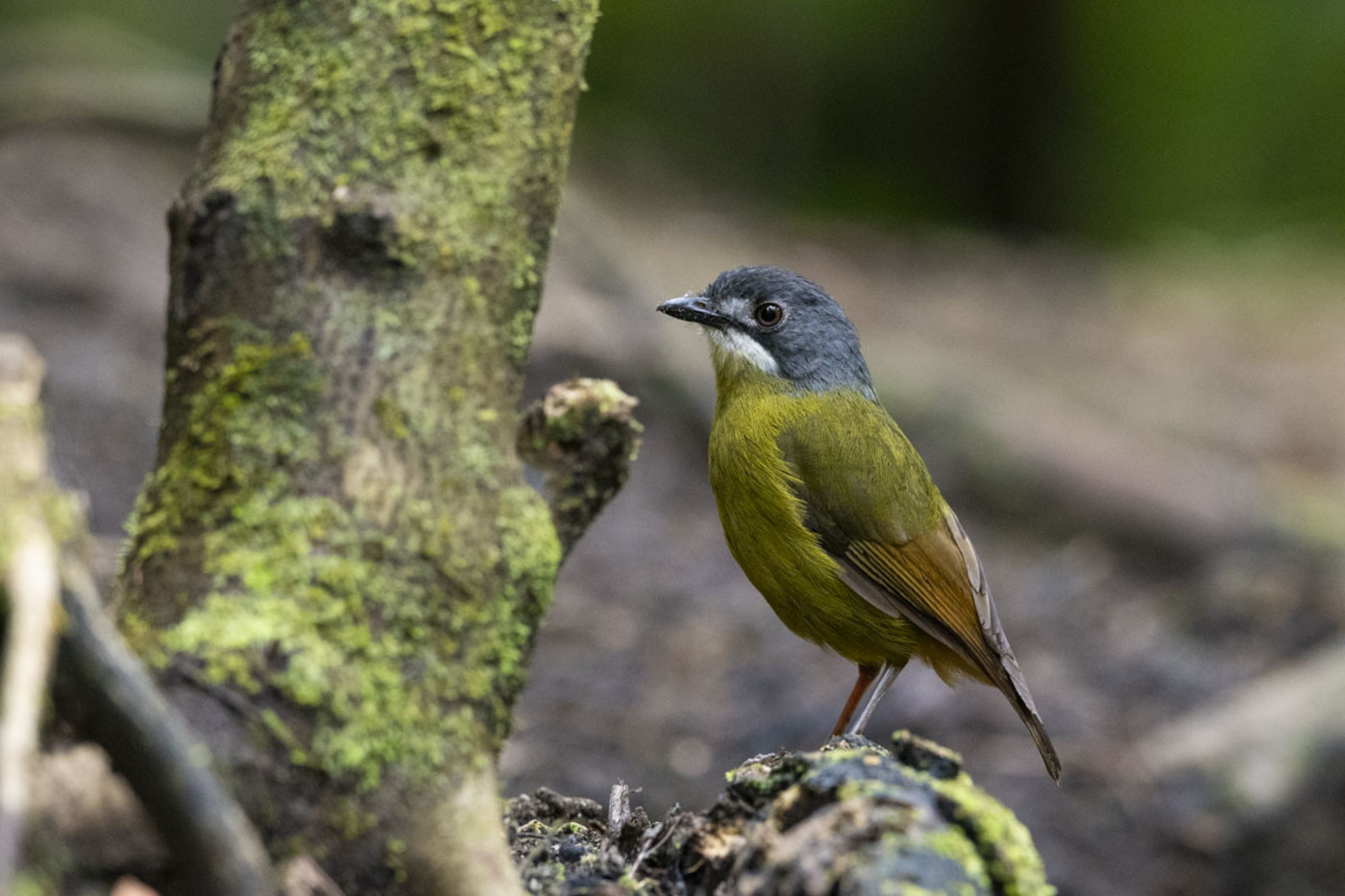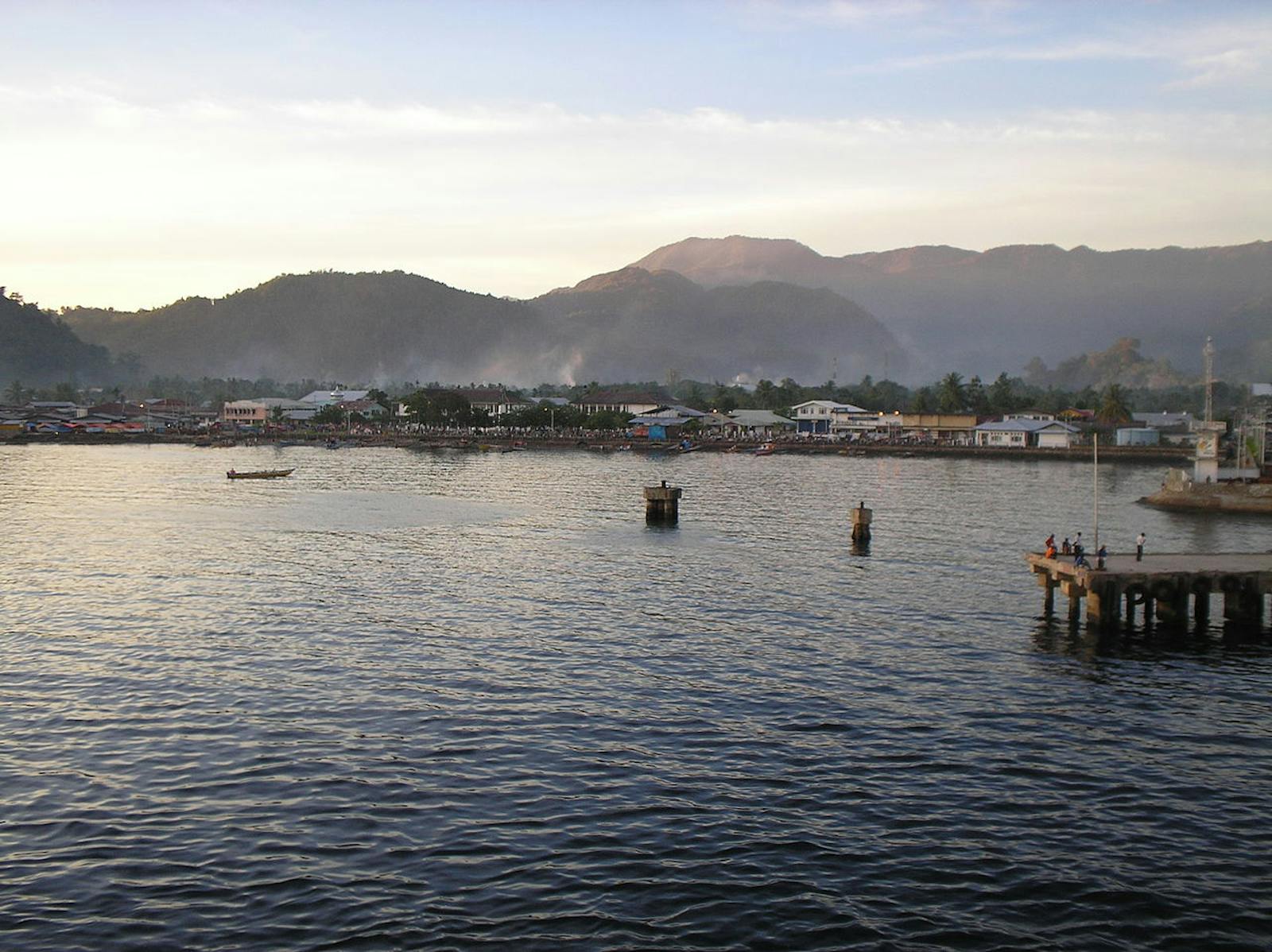Yapen Rainforests
The ecoregion’s land area is provided in units of 1,000 hectares. The conservation target is the Global Safety Net (GSN1) area for the given ecoregion. The protection level indicates the percentage of the GSN goal that is currently protected on a scale of 0-10. N/A means data is not available at this time.
Bioregion: New Guinea & Surrounding Islands (AU13)
Realm: Australasia
Ecoregion Size (1000 ha):
242
Ecoregion ID:
162
Conservation Target:
86%
Protection Level:
5
States: Indonesia
The Yapen Rain Forests ecoregion represents Yapen and Num islands, which lie across the Cenderawasih Bay—Bird of Paradise Bay in Indonesia—that constricts the western part of Papua New Guinea to form the Bird’s Head Peninsula. The ecoregion supports several endemic plant species, including 11 new species of Pandanus and a Begonia that were discovered in recent explorations.

The flagship species of the Yapen Rainforests ecoregion is the green-backed robin. Image credit: Encyclopedia of Life, Ben Tsai (CC by 4.0)
Yapen lies across Cenderawasih Bay and was once connected to Papua New Guinea. Paleogeology showed that the ‘Bird’s Head’ of Papua New Guinea once abutted the ‘body,’ but during the Late Miocene and Earliest Pliocene era five to three million years ago, the head twisted away from the body and create the bay, leaving Yapen Island as an isolated sliver of landmass.
The ecoregion is relatively small. The climate is tropical, humid, and wet, which is expected in this part of Melanesia. Temperatures vary little through the day and year, hovering at around 26°C. Annual rainfall reaches about 1,080 mm and is heavier during summer. The surface geology consists of a central spine of low mountains of limestone and plutonic rock, i.e., igneous rock crystallized from magma that has slowly cooled below the surface of the Earth. The highest elevation on the island is 1,430 meters.
The vegetation of Yapen Island is classified as tropical lowland alluvial and montane forest. The larger trees that dominate the lowland forests have wide distributions in Asia and Australasia, and include Ryparosa javanica, Pometia pinnata, Myristica elliptica, Canarium asperum, Horsfieldia sylvestris and Garcinia celebica. The lower montane forests are dominated by Lithocarpus rufovillosus and Castonopsis acuminatissima, or New Guinea Oak. Forests of Agathis labillardieri, a conifer known as New Guinea Kauri that belongs to the same plant family as the Norfolk Island Pine and Monkey Puzzle tree, form narrow, elongate strips in the landscape. The island is recognized as a Centre of Plant Diversity.
The overall species richness and endemism of this ecoregion are low when compared with other ecoregions nearby. The mammal fauna consists of 37 species, including the ‘near endemic’ Yapen rat, inhabiting the nearby Biak and Numfoor islands. The ecoregion supports about 147 bird species, including the near-endemic Spice imperial-pigeon and the green-backed robin, whose restricted range distributions qualify them as ‘. In the absence of large mammals, birds are the larger predators in this ecoregion, notably the Gurney’s eagle, Meyer’s goshawk, grey-headed goshawk, collared sparrowhawk, long-tailed honey-buzzard, Oriental hobby, and peregrine falcon. Some of the other larger birds—for example, Blyth’s hornbill—and several species of fruit bats or flying foxes are sensitive to forest fragmentation and degradation.
The ecoregion’s forests are under great pressure from agricultural clearing and logging, driven by a human population increase in recent decades. Local sawmill operations are associated with logging. Anthropogenic fires are frequent and common. A conservation plan that calls for engagement of local people as community stewards and for working with the local government has been prepared. The plan also recognizes the traditional ownership rights of the local people, along with the boundaries that demarcate traditional ownership to ensure that local people have access to their lands and can utilize the resources in these lands. The Governor of Papua has pledged support to protect the forests if external funds are available.
Priority conservation actions for the next decade
- Stop illegal logging in and around the protected areas.
- Conduct biological surveys to assess the island’s endemic flora and fauna, especially in the ultramafic and limestone areas.
- Implement the protected area management plan that has been prepared, which will ensure the forests and its biodiversity are protected.
-
-
- Government of the Republic of Indonesia. The fifth national report of Indonesia to the Convention on Biological Diversity. Ministry of Environment and Forestry of Indonesia. 2014.
- Marshall, A. and B. M. Beehler. 2011. The Ecology of Indonesia Series. Vol VI. The Ecology of Papua. Periplus Editions
- Wikramanayake, E, E. Dinerstein, et al. 2002. Terrestrial Ecoregions of the Indo-Pacific: A Conservation Assessment. Island Press
-
Cite this page: Yapen Rainforests. Ecoregion Snapshots: Descriptive Abstracts of the Terrestrial Ecoregions of the World, 2021. Developed by One Earth and RESOLVE. https://www.oneearth.org/ecoregions/yapen-rainforests/
-



